The Fabric of the Universe
2011
An overview of the boundaries of physical science by an experimental physicist.
The Exploratorium was founded as a museum of science, art, and human perception.
Observation is an important part of science and yet it is seldom taught in science courses. Many examples of poor science arise because people honestly report what they see, and yet their reports are flawed because they do not understand how their visual system can be fooled. Understanding perception is necessary to help us understand how there can be so many incorrect pseudoscientific reports in the media.
1. What is science?
Keynote 1 Introduction
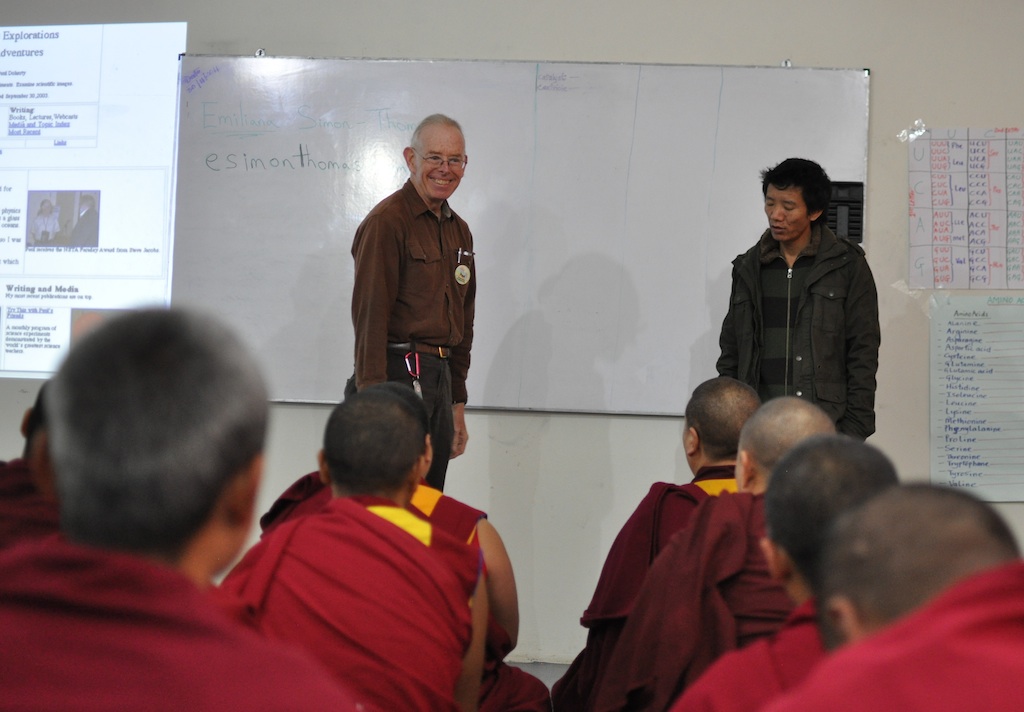
Paul Doherty meets a class of 18 Geshes. (The Buddist equivalent of a PhD)
Keynote 1 What is Science
An experimental physicist’s view.
Perception
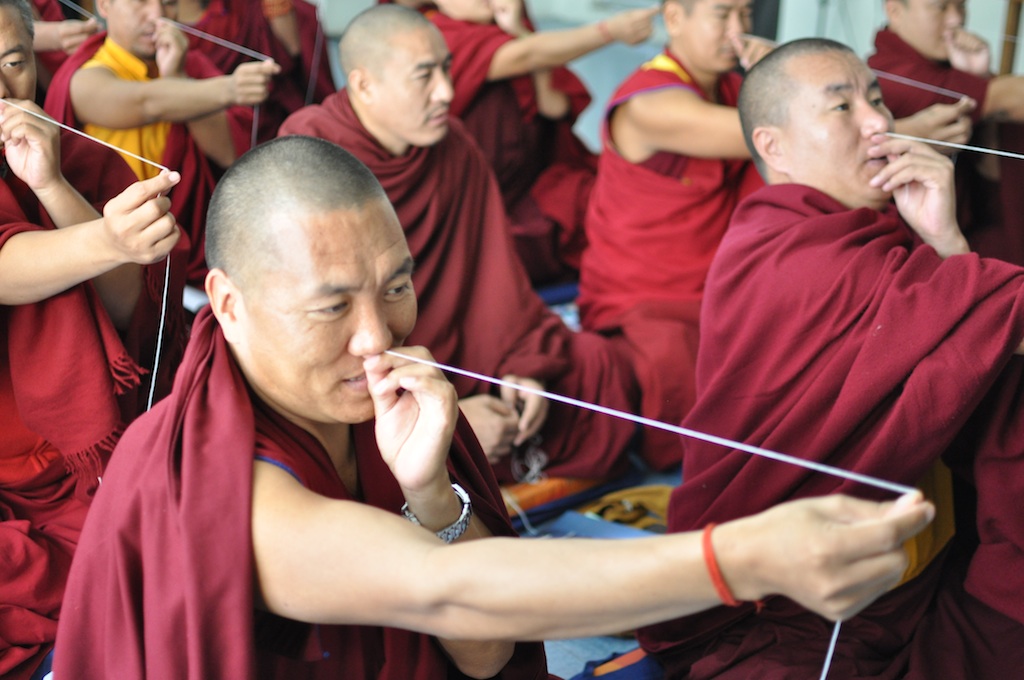
What do you see? Look at a string. You will see 2 strings, they may make an X, a V, or be parallel. What is real?
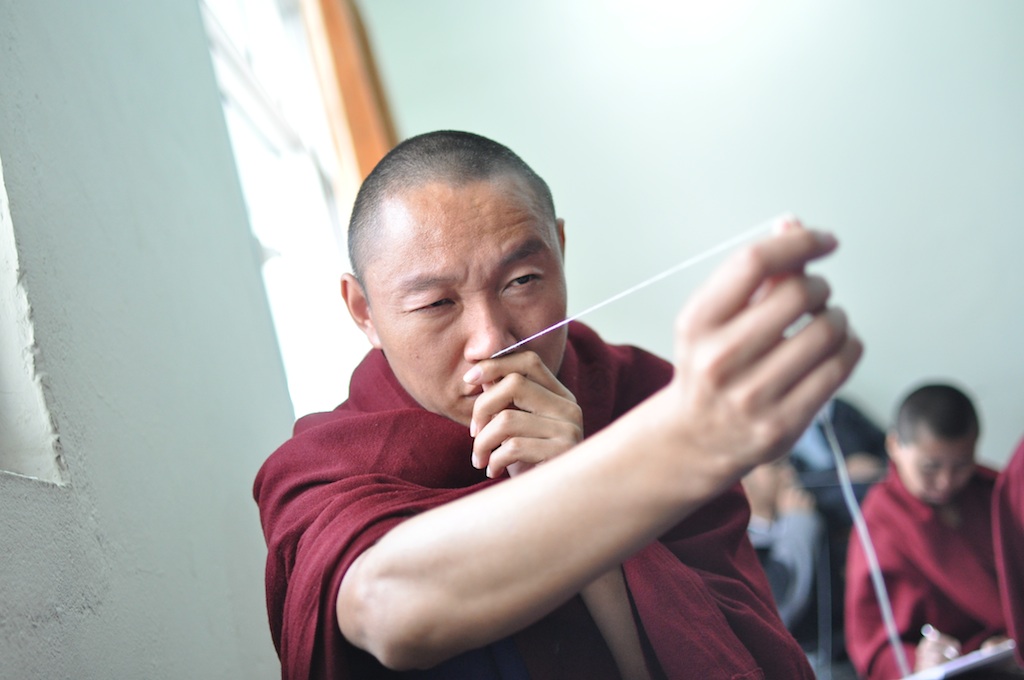
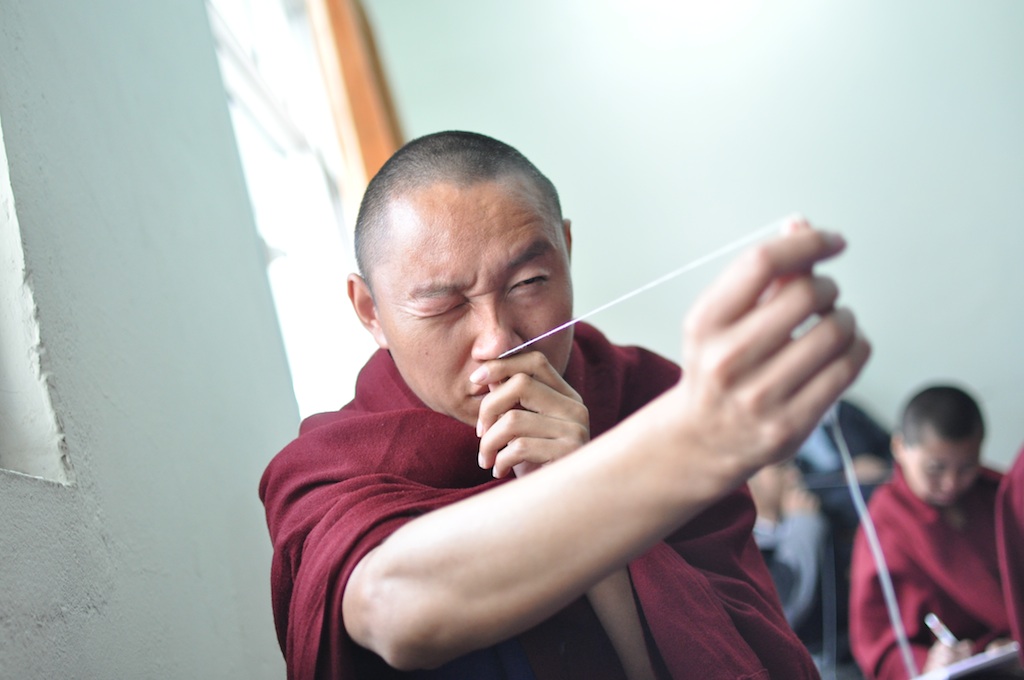
Find the origin of the 2 strings, blink one eye closed and then the other. Each eye sees one string.
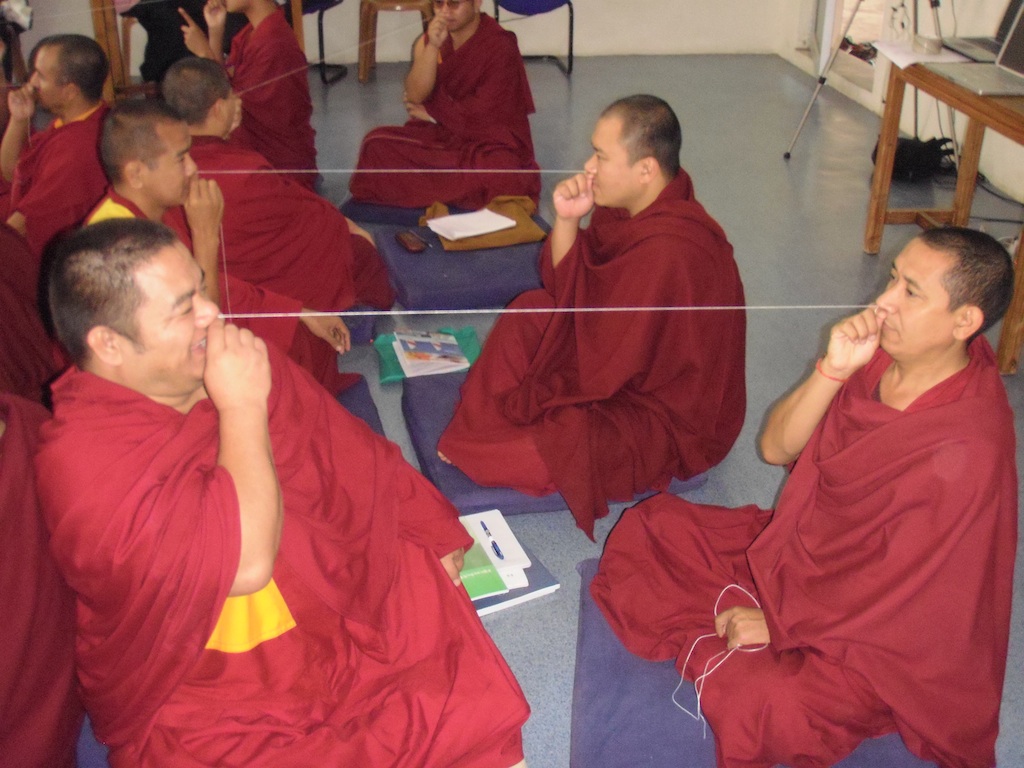
If two monks hold a string between them they each see a V shape with 2 strings, because they focus on each thers face.
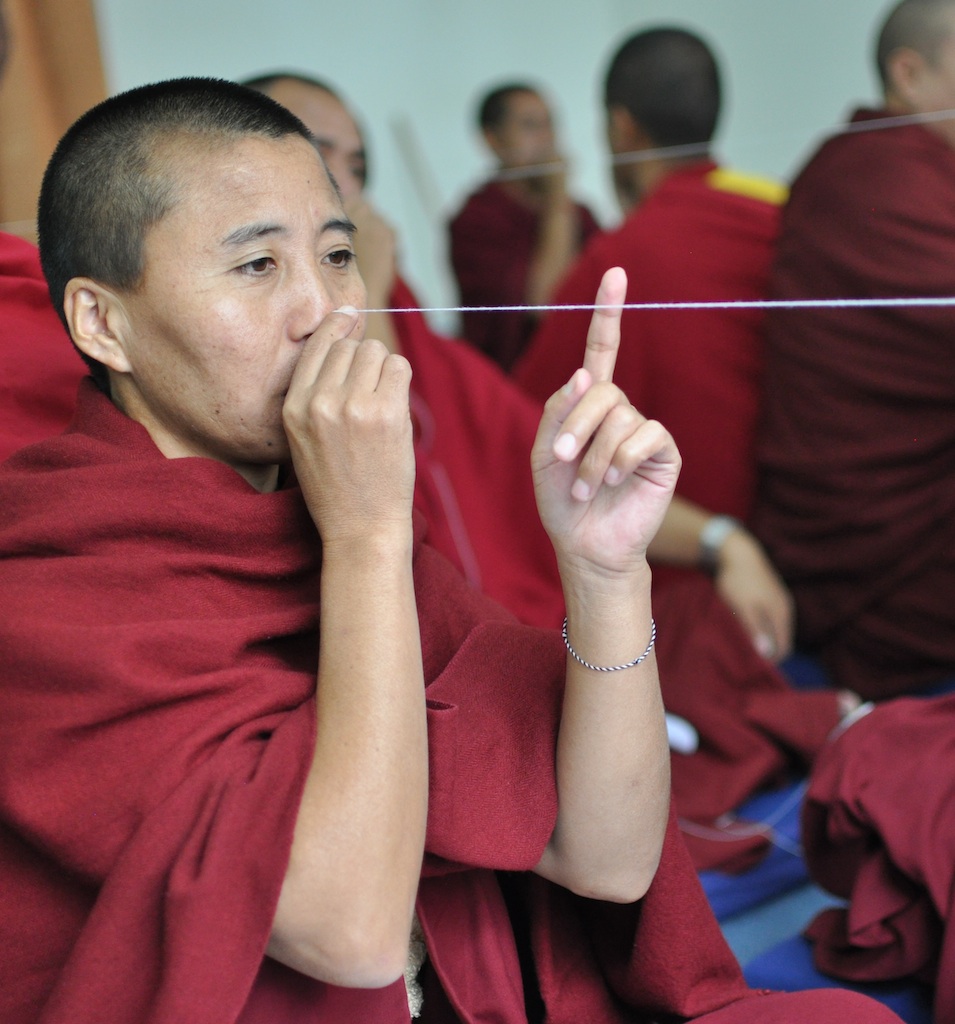
One of the geshes looks at a finger and notices that he sees two strin s making an X which crosses near her finger. Then she moves her finger to a different distance and the crossing point changes.
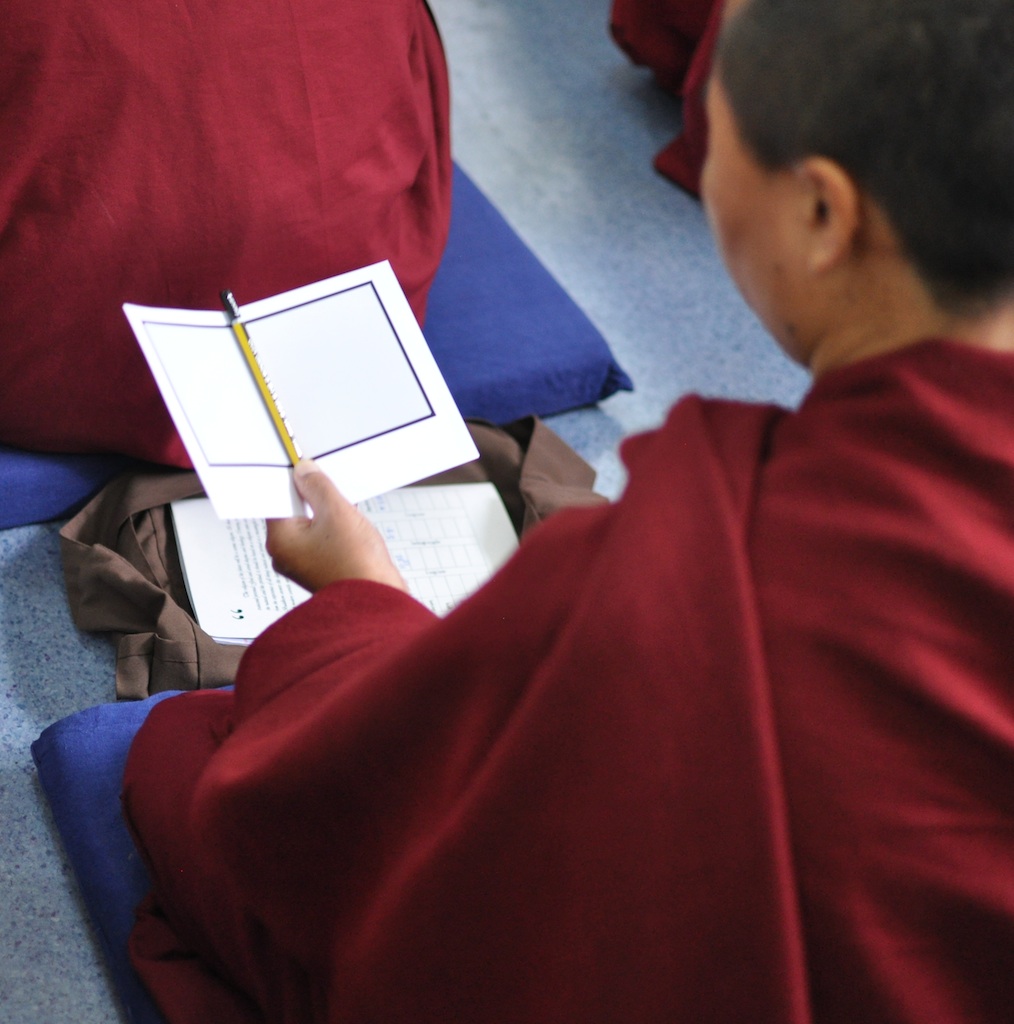
Look at a gray step postcard, if you cover the boundary it looks like one gray rectangle.
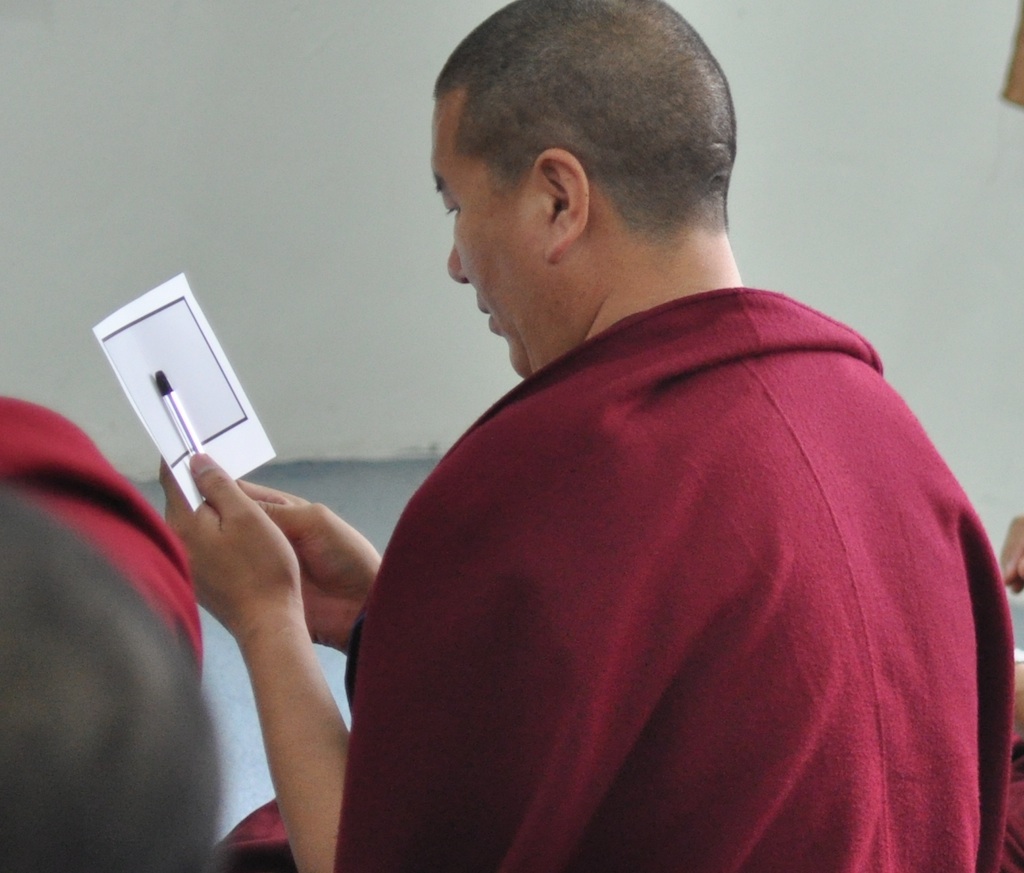
The monks immediately tried experiments like covering 1/2 of the edge.
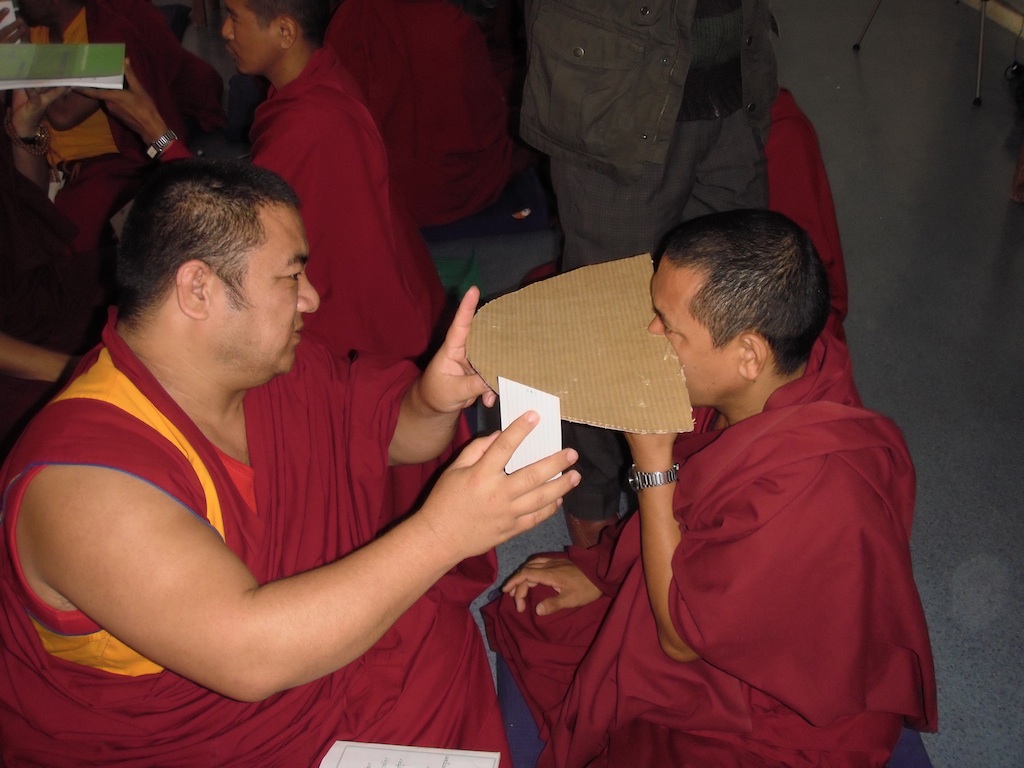
Looking at the finger you cannot read the letter on the white card until it is very close to the finger. This exhibit is named peripheral vision.
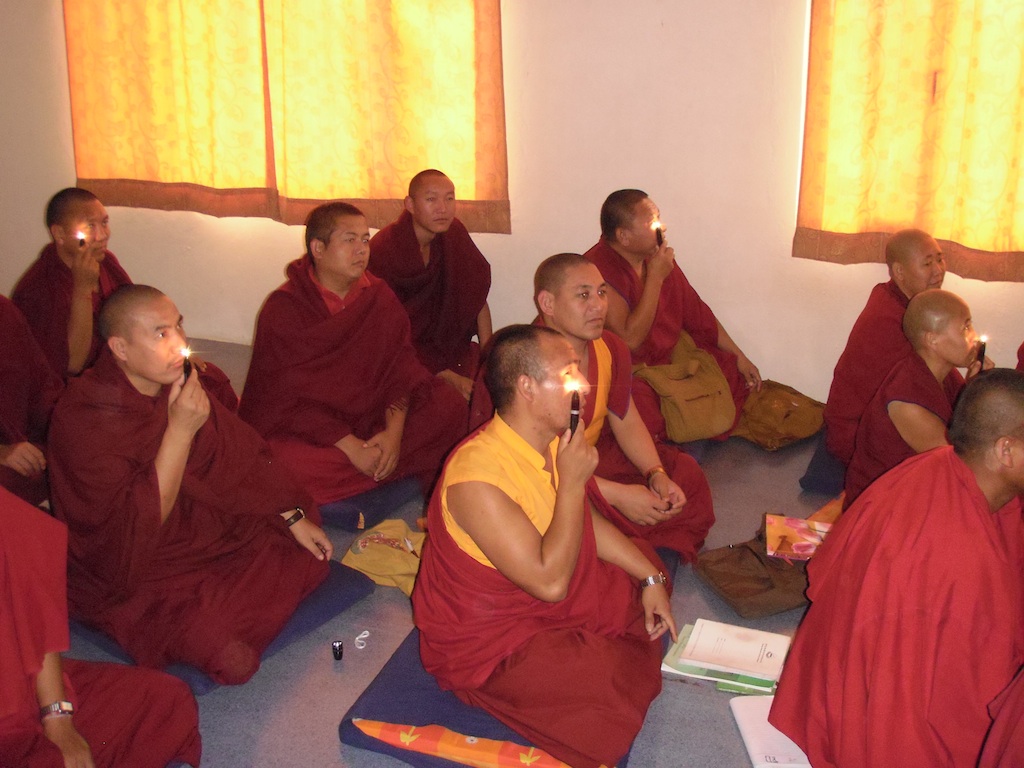
Move a small dim point of light below your eye and you will see the blood supply pattern in front of your retina.
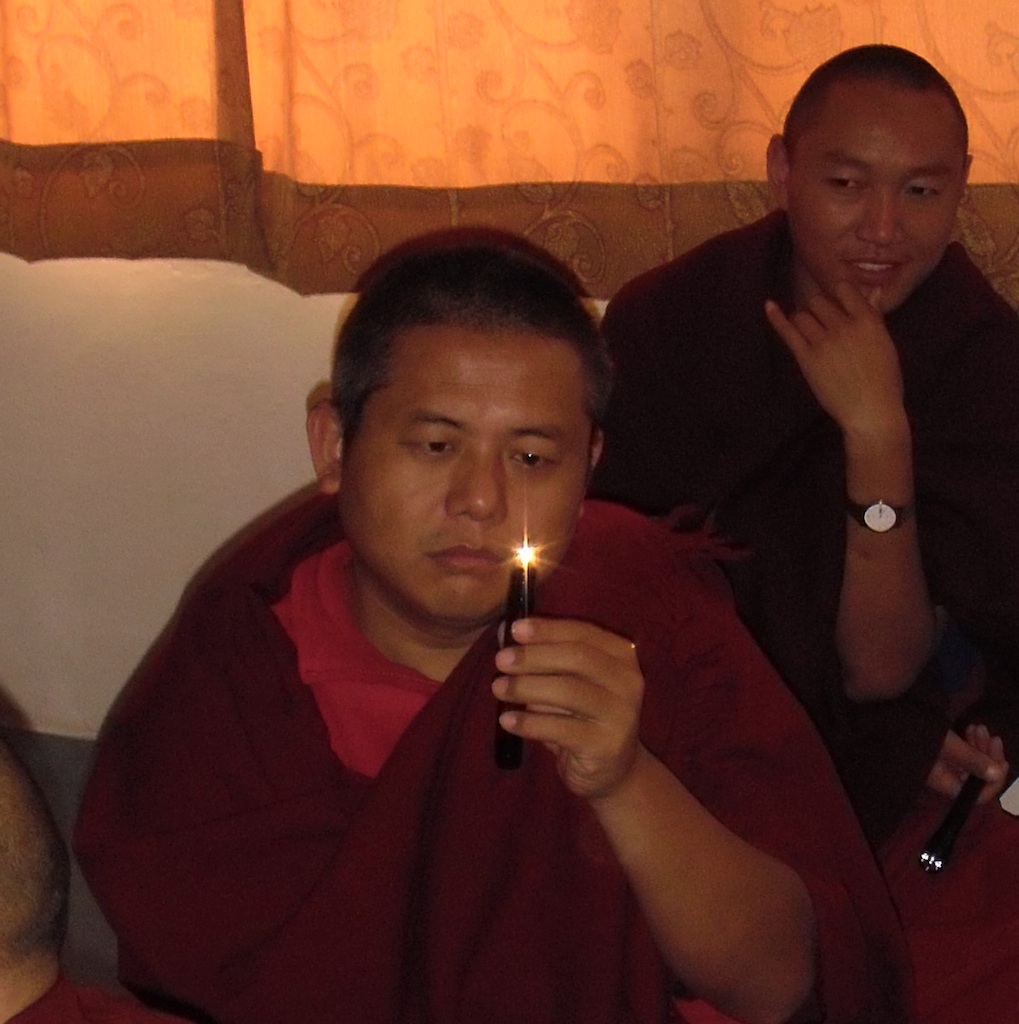
A small bright point of light , we made it with an uncapped minimag light, will be surrounded by rays of light. Tese rays do not exist around the light but only in your eye. Your brain imagines them as being around the light.
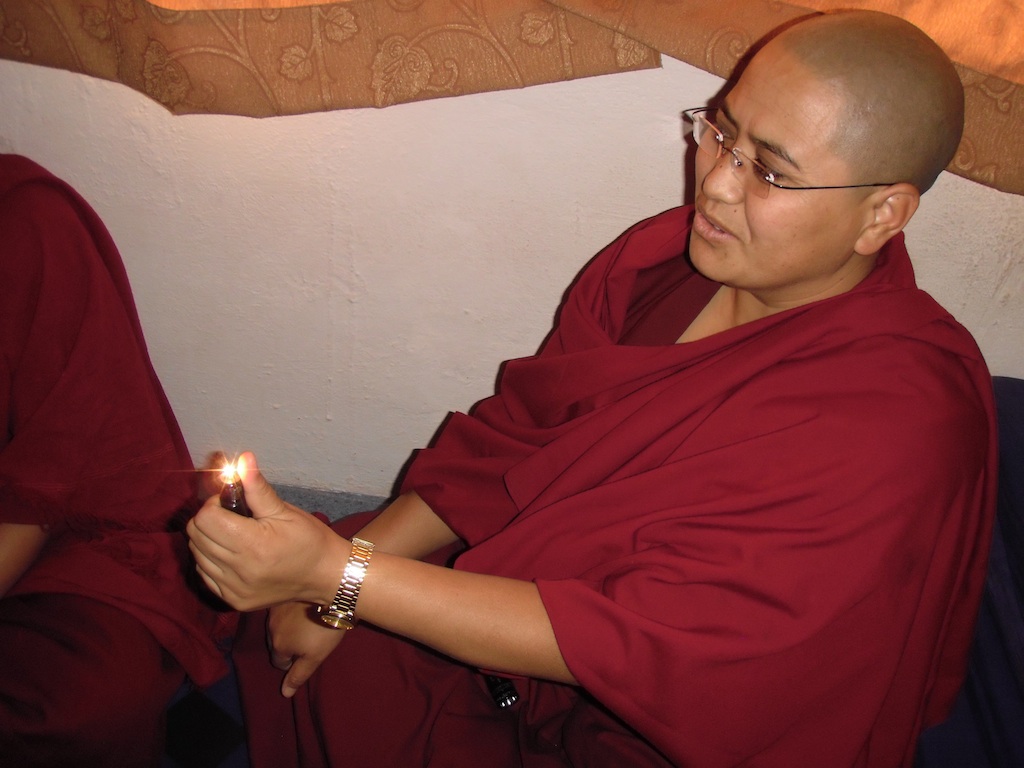
If you cover the light with your thumb the rays vanish. even though before you covered the light, the rays spread far beyond your thumb.
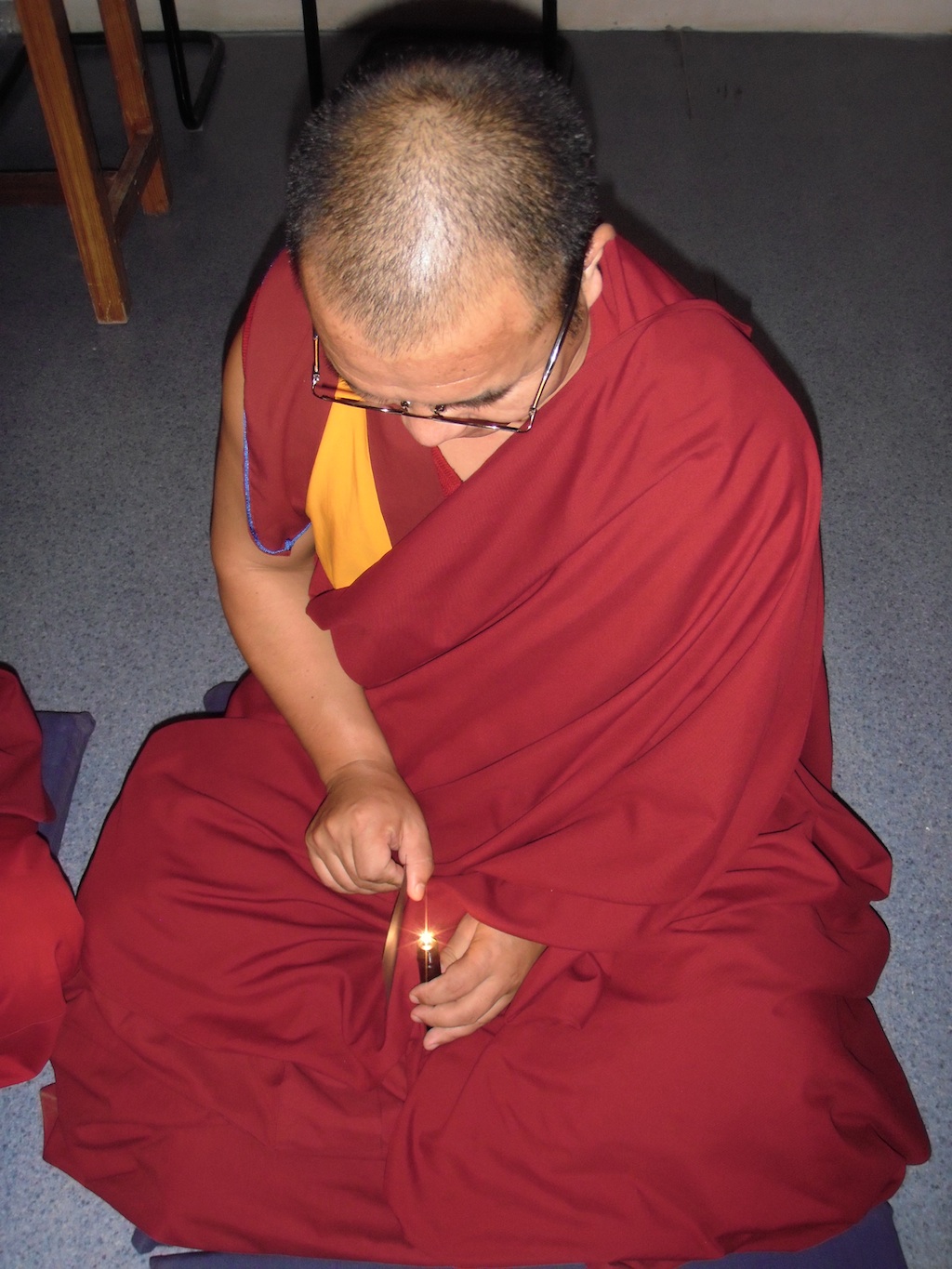
Hold a black card beside the light and the rays penetrate right through the card.
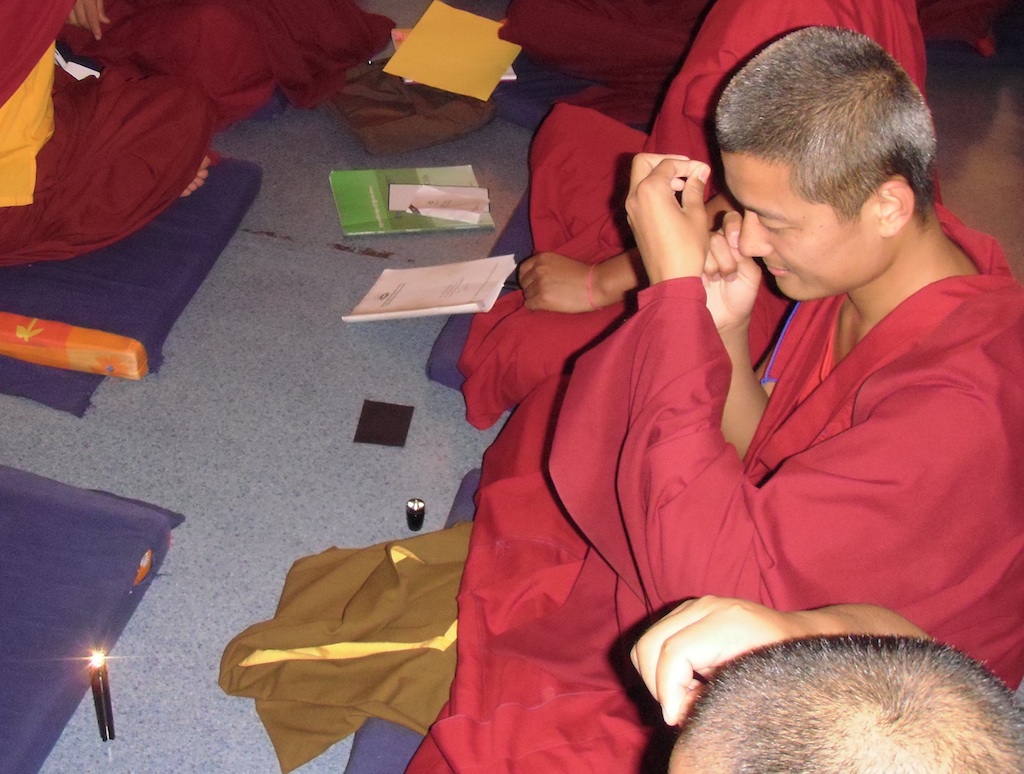
Hold a hair strtched vertically in front of your eye, bertween you and a small light source, and you will see the light diffract to the side of the hair. Patterns on the cornea cause the light to spread into lines on your retina which you see as rays.
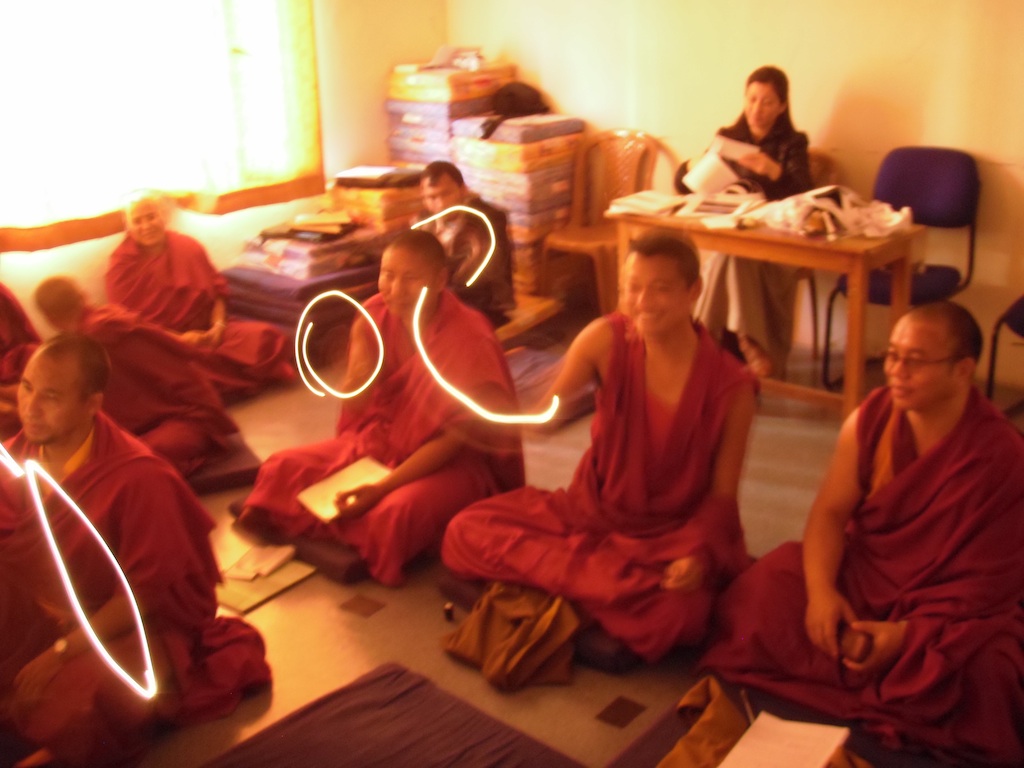
By moving an uncapped minimag light around you can make 3 dimensional afterimages that look like balls of wire.
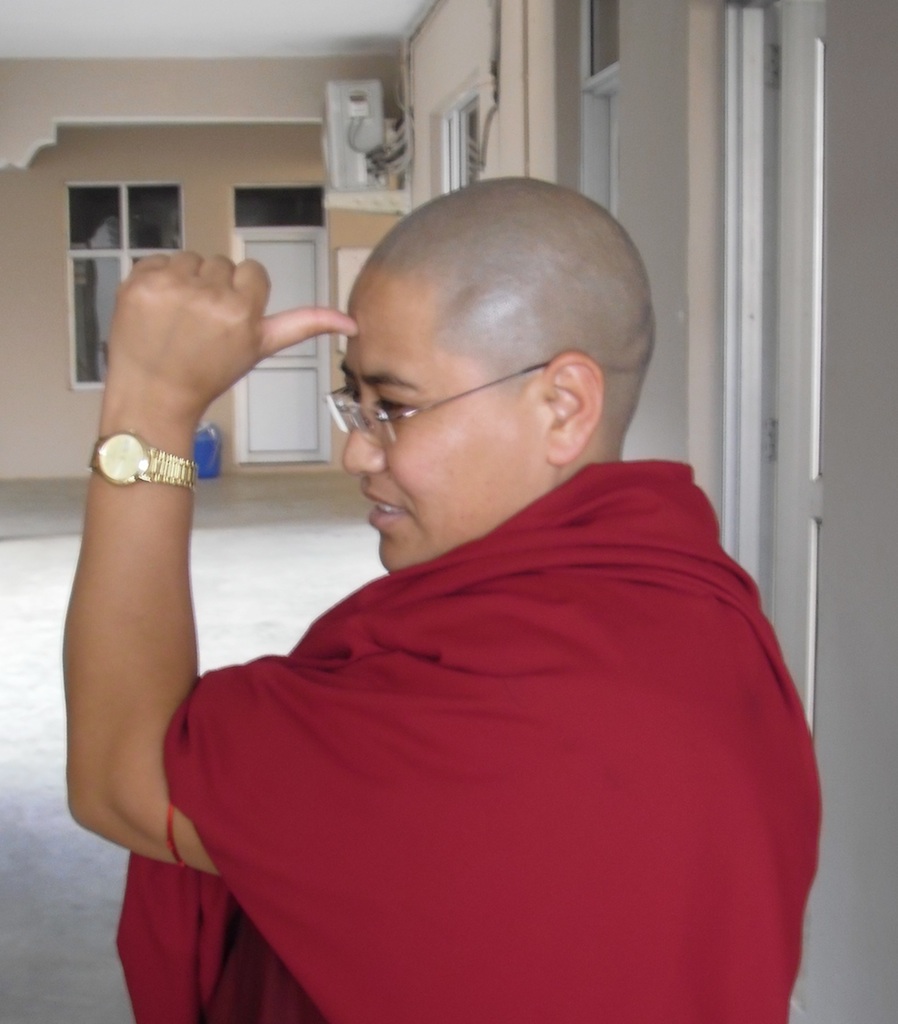
Tenzin Lhadron shows me how to look through my wrist.
This triggered a discussion of perception and reality.
2. Conservation of energy.
What is temperature?
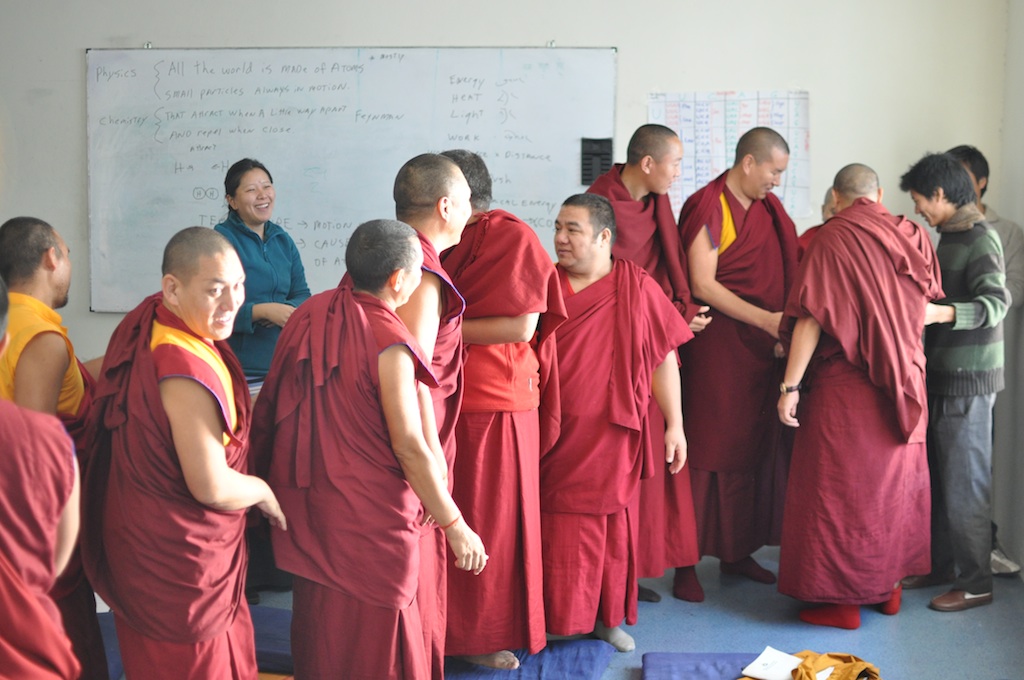
Line the monks up by hand temperature.
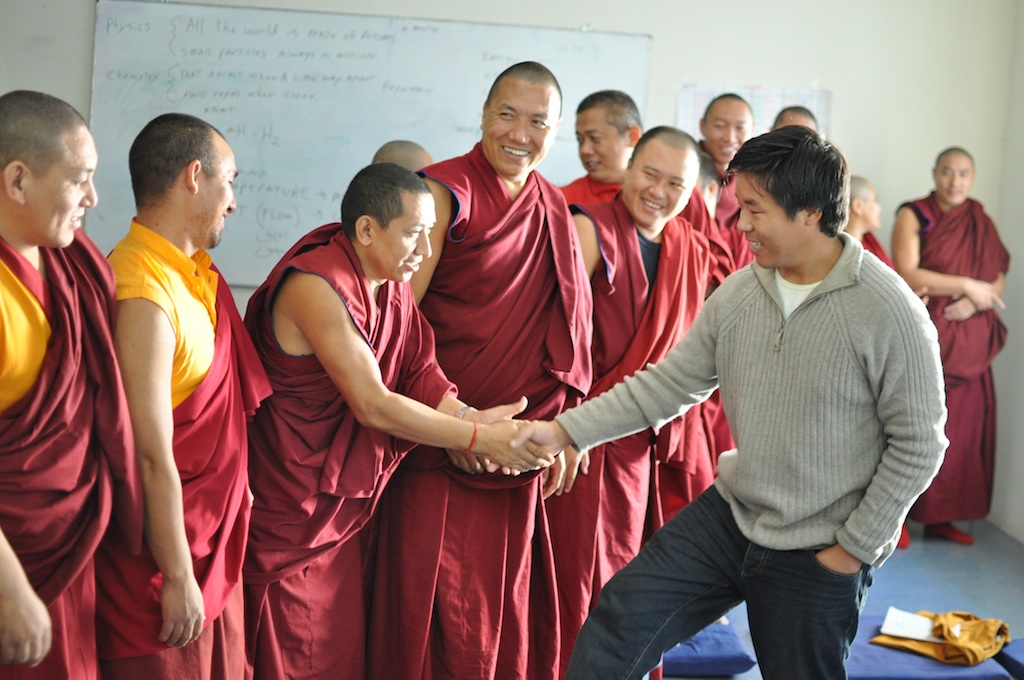
The person with the coldest hand and the wormest hand shakes hands with everyone.
2. What is Light
Keynote 2 What is Light, A history
A historical approach illustrating how the ideas of science change.
Newton: Particle
Huygens: Wave
Thomas Young Wave
August Fresnel Wave
Einstein quantized wave
Scrodinger quantized wave
Feynman Quantum electrodynamics
3. The size of things
Powers of 10
Distance, time, temperature, mass, put them on a line
The Mass-Radius diagram as a map of scientific limits
Man
Earth
Sun
Galaxy
Galactic clusters
Man
Cells
Molecules
Atoms
Protons neutrons
Quarks
electrons
Looking out in space is looking back in time.
Mass is energy.
Objects with no size electrons
Hypothetical strings
zero rest mass objects light.
5. What is the universe made of?
Particles fermions
All the world is made of atoms
Atoms are made of protons neutrons and electrons
Muons and Taus
Neutrinos
Protons neutrons and mesons are made of quarks
Forces and their boson particles
Gravity, gravitons and black holes
electricity and magnetism, photons
strong nuclear, gluons
weak nuclear, W and Z bosons
6. Relativity
Space, Time Spacetime
The speed of light
Some “things” can go faster than light, but not things that carry information.
E = mc^2
Mass changes the rate that clocks run.
Mass changes distance intervals in a vacuum.
The expansion of the universe in space and time.
7. Quantum mechanics
Particles and waves
Uncertainty principle
Scroedinger’s cat
8. MR diagram Again
Putting it all together: plot objects in the universe on a graph of mass versus radius
The edge of the universe
The event horizon of black holes
Compton wavelength
Quantum black holes and the planck length
The planck time
Is the universe a black hole?